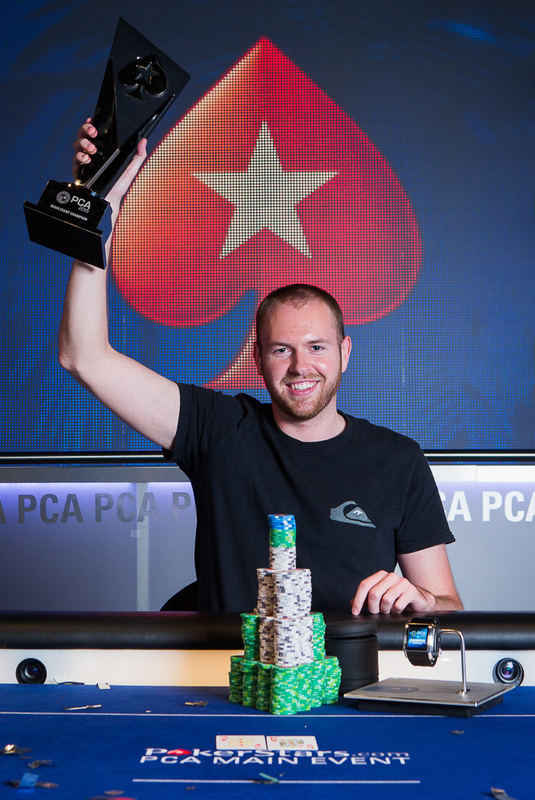






Poker Hand of the Week: 1/16/15You Decide What's The Best Play |
|
|
Give us your opinion in the comments section below for your chance at winning a six-month Card Player magazine digital subscription.
Ask any group of poker players how you played your hand and they’ll come up with dozens of different opinions. That’s just the nature of the game.
Each week, Card Player will select a hand from the high-stakes, big buy-in poker world, break it down and show that there’s more than one way to get the job done.

The Scenario
There are five players remaining in a major tournament. With 8.3 million, you are the current chip leader. There is one short stack with about 15 big blinds. The blinds are 50,000-100,000 with a 10,000 ante, giving you 83 big blinds.
The action folds around to you in the small blind and you look down at A 10
10 . You raise to 215,000 and your opponent, a player with a medium stack of 4 million, makes the call from the big blind.
. You raise to 215,000 and your opponent, a player with a medium stack of 4 million, makes the call from the big blind.
The flop comes down A 7
7 2
2 and you check. Your opponent bets 250,000 and you make the call. The turn is the Q
and you check. Your opponent bets 250,000 and you make the call. The turn is the Q and you check again. This time your opponent bets 425,000.
and you check again. This time your opponent bets 425,000.
The current pot size is 1,405,000 and your opponent has 3,100,000 behind his bet. For the most part, he has not yet gotten out of line and has played pretty solid. You on the other hand, have enjoyed a chip lead for the better part of two days and have played more than your fair share of pots.
The Questions
Do you call, raise or fold? If raising, how much? What would be the benefit of raising now? If calling, what is your plan for the river? What if a diamond hits? What if a blank card hits? Why would you not continuation bet on the flop after hitting top pair? In what kind of circumstances would you consider folding your hand?
What Actually Happened

Kevin Schulz
 10
10 on a board of A
on a board of A 7
7 2
2 Q
Q . His opponent, German player Niklas Hambitzer had bet the flop and then bet 425,000 on the turn.
. His opponent, German player Niklas Hambitzer had bet the flop and then bet 425,000 on the turn.
Kornuth, perhaps sensing extreme strength, opted to fold his hand. Hambitzer did not reveal his cards, but the hole card camera confirmed that he was holding A 5
5 for top pair and a flush draw.
for top pair and a flush draw.
Hambitzer went on to finish in fourth place, earning $482,820. Kornuth did one better, busting in third for $641,140. The eventual winner was American Kevin Schulz, who picked up his first career EPT title and the $1,491,580 first-place prize.
What would you have done and why? Let us know in the comments section below and try not to be results oriented. The best answer will receive a six-month Card Player magazine digital subscription.
